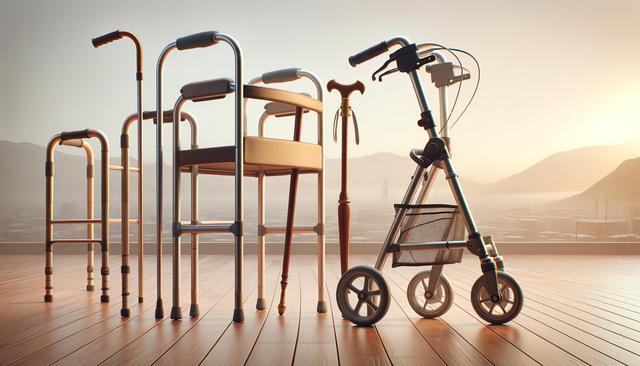The Challenge of Changing Mobility: You’re Not Alone
Experiencing a shift in mobility can be both physically and emotionally challenging. Whether it’s due to aging, recovering from surgery, or managing a chronic condition, many individuals find themselves adjusting to a new way of moving through the world. The good news is, you’re not alone. Millions of seniors and others with mobility difficulties share similar experiences. Recognizing this common journey is the first step toward finding solutions that improve daily life. Accepting the need for assistance doesn’t mean giving up independence—it often means taking control of your mobility in a new way. Walking aids can be empowering tools that help you maintain your lifestyle and stay connected to your community. They offer a safe, reliable means to continue enjoying activities, whether it’s a walk in the park or navigating your home with ease.
More Than Just Support: The Real Benefits of Walking Aids
Walking aids provide more than physical assistance—they offer emotional reassurance and a renewed sense of control. By reducing the risk of falls and enhancing stability, these aids can increase confidence in everyday movement. The benefits go far beyond support, including:
- Improved posture and reduced strain on joints
- Greater endurance during walks or outings
- Enhanced balance and coordination
- Increased freedom to participate in activities you enjoy
For many, the simple act of being able to move independently without fear of injury can make a significant difference in quality of life. When used correctly, walking aids promote safe, active lifestyles and help users remain engaged with their environments and social circles.
Finding Your Perfect Partner: Types of Walking Aids
Choosing the appropriate walking aid depends on your specific needs, comfort level, and mobility challenges. There are several types designed to meet various mobility requirements. Understanding your options is key to making an informed choice. Common types of walking aids include:
- Canes: Ideal for individuals needing minimal support and balance assistance
- Walkers: Provide more stability and are useful for those with significant balance or strength concerns
- Rollators: Walkers with wheels, brakes, and a seat, offering both mobility support and a resting option
- Crutches: Typically used during injury recovery to keep weight off a leg or foot
Each aid comes with its own set of features that can cater to specific needs. Consulting with a healthcare provider can guide you in choosing the right aid that matches your physical abilities and lifestyle preferences.
Step Towards a More Active Life: How a Walking Aid Can Help You Do More
One of the most encouraging aspects of using a walking aid is the potential to regain access to a more active and fulfilling life. These tools are designed not only to assist with movement but to expand what’s possible. With a suitable aid, users often find themselves:
- Reconnecting with hobbies such as gardening or shopping
- Engaging more in family and social activities
- Improving overall physical health through increased movement
- Reducing the likelihood of falls and related injuries
A walking aid can be the bridge that connects you back to the things you love. Whether it’s attending a community event or simply walking to the mailbox with ease, every regained activity contributes to a richer, more independent lifestyle.
Hear From Others: Real Stories of Empowered Movement
Hearing real-life experiences can be both informative and inspiring. Many individuals who have embraced walking aids share similar stories of transformation—moving from hesitation to empowerment. For example, one senior described how a rollator gave her the confidence to return to her weekly book club, while another shared how a cane allowed him to continue his morning walks with friends. These stories highlight the emotional and practical benefits of walking aids. They’re reminders that mobility tools are not signs of decline, but symbols of strength and adaptability. Embracing a walking aid allows countless individuals to reclaim their movement, build resilience, and enjoy a more connected and active life.
Conclusion: Reclaim Your Movement
Mobility changes are a natural part of life, but they don’t have to limit your independence or joy. Walking aids are valuable tools that support stability, confidence, and daily function. As you’ve read in “The Challenge of Changing Mobility: You’re Not Alone” and seen in “Hear From Others: Real Stories of Empowered Movement,” the journey to improved mobility is shared by many—and made easier with the right support. By exploring your options in “Finding Your Perfect Partner: Types of Walking Aids” and understanding “Choosing the Right Aid,” you can take a “Step Towards a More Active Life: How a Walking Aid Can Help You Do More.” Embrace these tools as allies on your path to a more fulfilling, mobile, and independent lifestyle.









